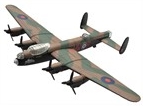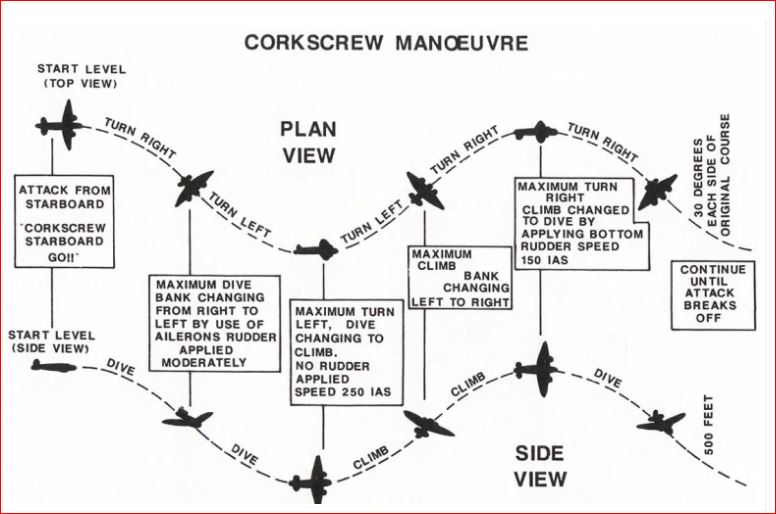
|
Crash - Avro Lancaster - type B I/B III - s/n DV312 VN°J |

|

|
Crash - Avro Lancaster - type B I/B III - s/n DV312 VN°J |

|
| Fiche France-Crashes 39-45 modifiée le 03-04-2023 | |||||
| Date | Nation |
 Département Département |
Unité | - | Mission |
|---|---|---|---|---|---|
| 19-07-1944 | Angleterre/Common. | Haute Marne | 50 Sq RAF | Revigny-sur-Ornain (55) : gare de triage | |
| Localisation | Robert-Magny - 8 km SO Wassy |
|---|---|
| Circonstances | Abattu par chasseur de nuit - 02h05 |
| Commentaires | Décollage 22h58 le 18/7 Skellingthorpe, Lincolnshire UK |
| Sources ** |
www.revi.cz / BomberCommand / CWGC / Listes des bombardiers et équipages perdus: Royal Air Force - Bomber Command Losses of the Second World War par WR Listes des bombardiers et équipages perdus: Royal Air Force - Bomber Command Losses of the Second World War par WR Chorley WR Chorley |
| Historique | 18/12/2013=Ajout lien photo,prénoms Desautels - 22/12/2014=Ajout lien,6 photos - 31/01/2018=Ajout lien - 03/04/2023=Ajout rapp perte,comm équip |
| Grade | Prenom | Nom | Poste | Corps | Etat |
 Lieu d'Inhumation Lieu d'Inhumation |
Commentaires |
|---|---|---|---|---|---|---|---|
| F/O | William James | Long | Pil | RCAF | Décédé | Cim Com Robert-Magny (52) * | J/25941-R/160224 - 23 ans - Né le 15/07/1921 à Toronto, Ontario - Fils de Samuel et Caroline (Nevin) Long - Sharon, Pennsylvania USA - 16e Op |
| Sgt | Warren Herbert | Latham | Mec | RAF VR | Décédé | Cim Com Robert-Magny (52) * | 1850362 - 23 ans - Fils de George Henry et Ada Latham, de Bromley, Kent UK - 19e Op |
| P/O | Thomas Horace | Lunnin | MitA | RCAF | Décédé | Cim Com Robert-Magny (52) * | J/90304-R/203830 - 19 ans - Né le 25/03/1925 - Fils de George Herbert et Madeleine Irene Clare (MacMillan) Lunnin - Creelman, Saskatchewan, Canada - 19e Op |
| P/O | Francis Giles | Maltais | MitS | RCAF | Décédé | Cim Com Robert-Magny (52) * | J/90373-R/187224 - 26 ans - Né le 22/02/1918 - Fils de Charles et Elizabeth (Bronson) Maltais; conjoint de Betty H Maltais - Haseldiney, Alberta, Canada - 20e Op |
| Sgt | Ronald Edward | Thomas | Nav | RAF VR | Décédé | Cim Com Robert-Magny (52) * | 1621276 - 25 ans - Fils de Thomas William et Ann Elizabeth Thomas, de Llandaff, Glamorgan UK - 19e Op |
| Sgt | Maurice | Whiteley | Rad | RAF VR | Décédé | Cim Com Robert-Magny (52) * | 1492814 - 19e Op |
| F/O | Robert Victor | Desautels | Bomb | RCAF | Evadé | J/26303 - Né le 19/11/1920 - Montreal, Canada - 19e Op - Seul rescapé - Se pose au S-O de Wassy (52) - Capturé par la Milice le 13/08/1944 - S'échappe le 22/08/1944 - Retour UK 28/08/1944 - Rapport WO 208/3321/2184 |
| Fiche tech | Correspondance grades | Abréviations utilisées | Filières d'évasion | Camps de Pow | Bases RAF/USAAF | Utilitaires |
|---|
|
Rapport de perte K.251 du DV312 - (1. Lancaster, 50/"J" left Skellingthorpe at 2258 hours and crossed the enemy coast, inward, near Dieppe. The night was clear with no moon. At this point there was little flak but a great profusion of fighter flares and several aircraft were seen shot down just inside the coast. 2. About 40 miles from the target, at 7,000 feet, about 0136 hours, the target-markers were seen to go down and shortly afterwards, fighter flares were dropped immediately below the aircraft. Immediately, Visual MONICA indicated an aircraft closing to 800 yards, but it was not sighted. The Lancaster corkscrewed and the fighter broke away to 1,500 yards, then closed again to 750 yards but was still not seen. The Wireless Operator ordered a corkscrew but the Mid Upper and Rear Gunners still saw nothing. The Bomb Aimer asked the Captain to try to go into the corkscrews faster and he and agreed to try. The fighter made three approaches, seen on MONICA, without firing, but on the fourth approach it opened fire. The Bomb Aimer had no knowledge of the direction of attack and seemed certain that the fighter was not sighted at any time. 3. The Lancaster was hit on the starboard side and both starboard engines were set on fire. The Pilot ordered the flight Engineer to feather both engines and push the Graviner switches, and the Bomb Aimer to jettison bombs. This was done immediately by the Bomb Aimer, who checked that all were gone. Immediately afterwards, the latter jettisoned the forward escape hatch, informed the Captain, and stood by awaiting the order to bale out. No trouble was experienced with the hatch. The Bomb Aimer had put on his parachute as soon as the presence of a fighter was known. 4. About one minute later, the engines were still on fire and the Pilot gave the order to abandon the aircraft. The Bomb aimer acknowledged the bailing out order and started to go. He had removed his helmet and was sitting on the edge of the glycol tank, head down and just about to roll out, when the aircraft went into a dive. It threw him towards the ceiling and he had to grab both sides of the exit and force himself through. He did not remember pulling the rip-cord, but found himself in the air with the harness pressing heavily on his chest, and nearly choking him. He tried to push it off his chest. So far as he knew, the harness was properly attached. He landed in the middle of woods. 5. The aircraft crashed at Robert-Magny at 0140 hours. An observer on the ground saw an aircraft with its starboard side burning in the air for 1,5 miles before it hit the ground. 6. The Bomb Aimer did not see the wreckage or the bodies of the crew. He was informed that two bodies were thrown clear of the aircraft, possibly these of the Wireless Operator and Navigator, and that it was impossible to identify the remains in the aircraft or to say whether they represented 3 or 4 bodies. Six burials were made.Original) - (F/O Desautels) - source : National Archives UK - Traduction Ph Laroyenne 1. Lancaster, 50/"J" a quitté Skellingthorpe à 22h58 et a traversé la côte ennemie, vers l'intérieur, près de Dieppe. La nuit était claire sans lune. À ce stade, il y avait peu de Flak mais une grande profusion de fusées éclairantes de chasse et plusieurs avions ont été abattus juste à l'intérieur de la côte. 2. À environ 40 miles de la cible, à 7 000 pieds, vers 01 h 36, on a vu les marqueurs de cible descendre et peu de temps après, des fusées éclairantes de chasse ont été larguées immédiatement sous l'avion. Immédiatement, Visual ARI5664 Monica - Radar actif d'alerte de queue pour les bombardiers de la RAF - Version US AN/APS13MONICA a indiqué un avion se rapprochant à 800 mètres, mais il n'a pas été aperçu. Le Lancaster a effectué la manœuvre du  Image issue du site 425alouette.wordpress.comcorkscrew et le combattant s'est détaché à 1 500 mètres, puis s'est rapproché à 750 mètres mais n'a toujours pas été vu. L'opérateur radio de nouveau effectué la manœuvre du corkscrew mais les mitrailleurs supérieures et arrière n'ont toujours rien vu. Le bombardier a demandé au capitaine d'essayer d’effectuer plus rapidement les corkscrew et il a accepté d'essayer. Le chasseur a effectué trois approches, vues sur MONICA, sans tirer, mais à la quatrième approche, il a ouvert le feu. Le bombardier n'avait aucune connaissance de la direction de l'attaque et semblait certain que le chasseur n'avait été aperçu à aucun moment. 3. Le Lancaster a été touché du côté tribord et les deux moteurs tribord ont été incendiés. Le pilote a ordonné au mécanicien de bord de mettre les deux moteurs en drapeau et d'appuyer sur les interrupteurs Interrupteur commandant l'extincteur d'un moteur (Orthographe incertaine)Graviner switch, et au bombardier de larguer les bombes. Cela a été fait immédiatement par le bombardier, qui a vérifié que toutes les bombes étaient parties. Immédiatement après, ce dernier largue la trappe de secours avant, prévient le capitaine et attend l'ordre de sauter en parachute. Aucun problème n'a été rencontré avec la trappe. Le bombardier avait enfilé son parachute dès que la présence d'un chasseur était connue. 4. Environ une minute plus tard, les moteurs étaient toujours en feu et le pilote a donné l'ordre d'abandonner l'avion. Le bombardier a accusé réception de l'ordre de sauter et a commencé à se préparer à sauter. Il a enlevé son casque et s’est assis sur le rebord du réservoir de glycol, la tête baissée et sur le point de sortir, lorsque l'avion s'est mis en piqué. Cela l'a jeté vers le plafond et il a dû saisir les deux côtés de la sortie et se forcer à passer. Il ne se souvient pas d'avoir tiré sur le cordon d’ouverture du parachute, mais s'est retrouvé en l'air avec le harnais pressant fortement sur sa poitrine et l'étouffant presque. Il a essayé de le repousser de sa poitrine. Pour autant qu'il le sache, le harnais était correctement attaché. Il atterrit au milieu des bois. 5. L'avion s'est écrasé à Robert-Magny à 01h40. Un observateur au sol a vu un avion avec son côté tribord brûler dans les airs sur 1,5 miles avant de toucher le sol. 6. Le bombardier n'a pas vu l'épave ni les corps de l'équipage. Il a été informé que deux corps avaient été projetés hors de l'avion, peut-être ceux de l'opérateur radio et du navigateur, et qu'il était impossible d'identifier les restes dans l'avion ou de dire s'il s'agissait de 3 ou 4 corps. Six inhumations ont été faites. Photo F/O Desautels et détails sur le crash sur memoires52 (Lien transmis par Claude Dannau) Photo du carré des tombes du DV312 sur www.inmemories.com
|